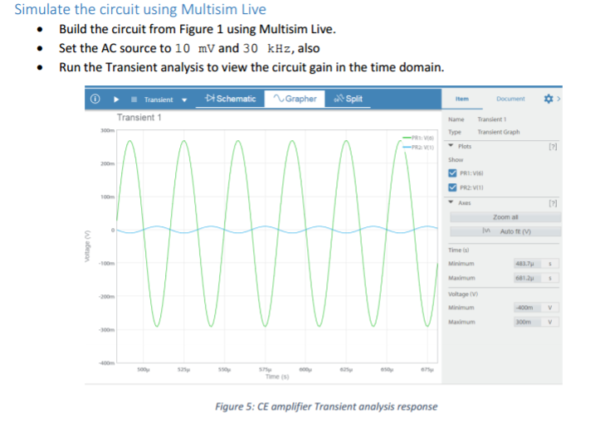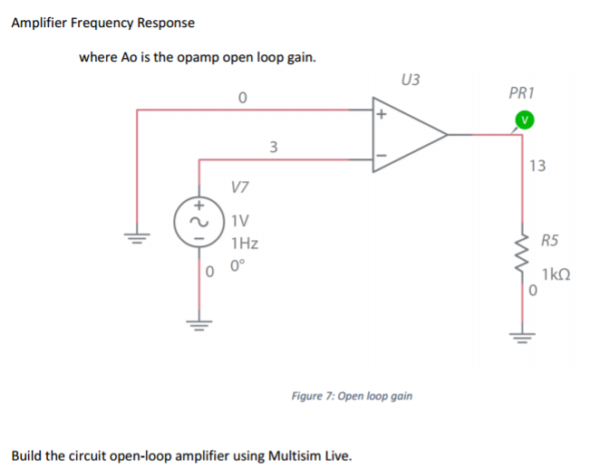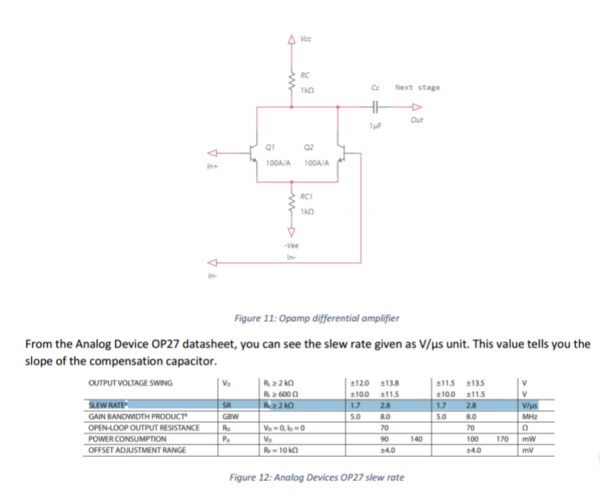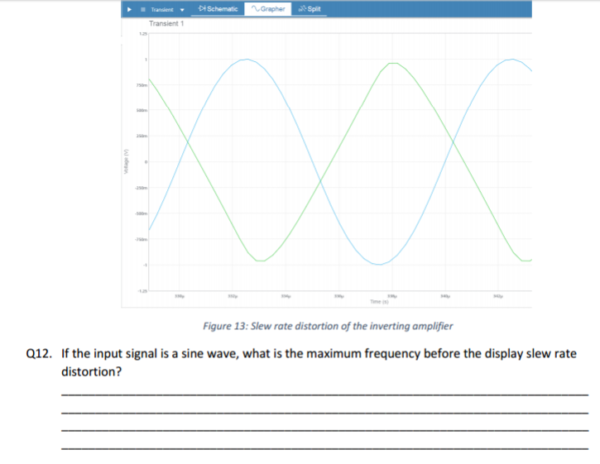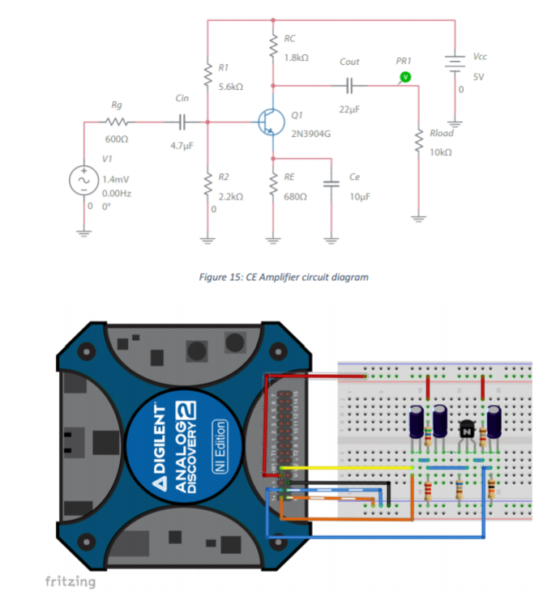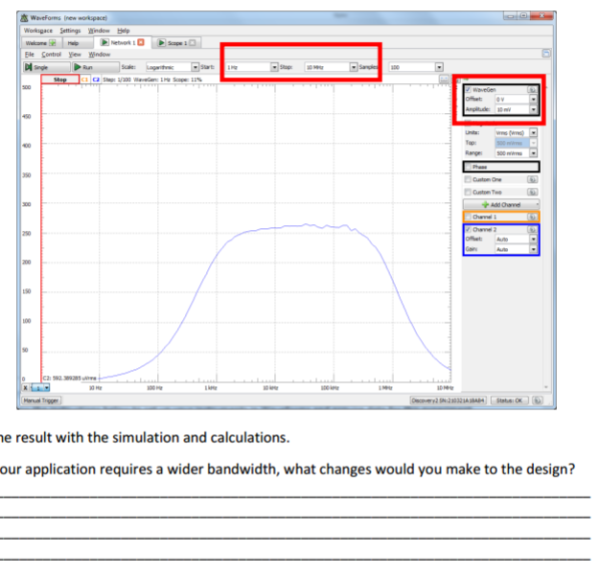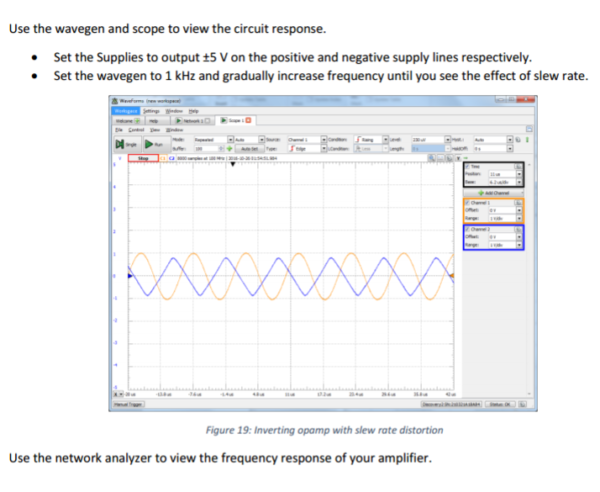Recently I announced that National Instruments has released a set of example labs designed to show you how you can get the full use of your Analog Discovery 2. If you have since forgotten and want to review the summaries and mission of the seven labs, you can check out the original post here.
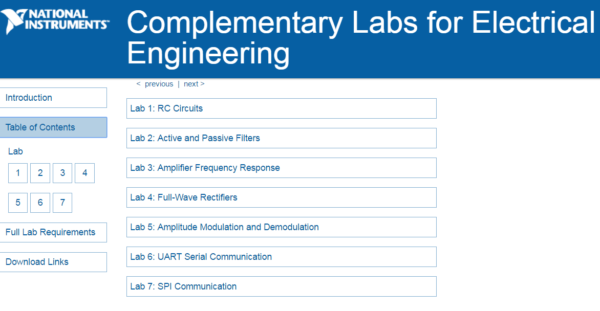
Over the next few weeks I’ll be covering each lab, the tools it uses, and concepts that can help you teach your students. In my previous post I went over Lab 2: Active and Passive Filters. In this post I’ll be going over Lab 3: Amplifier Frequency Response.

Lab 3: Amplifier Frequency Response is designed to teach students about the characteristics of amplifier circuits. Just as in passive and active filters, analyzing the frequency response is an important step in designing amplifier circuits. This lab will go through two types of amplifier circuits: a CE amplifier designed with an NPN transistor, and an inverting amplifier designed with an opamp.
This lab utilizes two sets of software, Multisim Live and WaveForms 2015. Multisim Live is a browser-based PC software that allows students to simulate their circuits from their tablet, smartphone, or computer, no matter where they are.
Waveforms 2015 is the software that drives the Analog Discovery 2. For this lab, students will use the power supply and waveform generators to provide the DC and AC input, and oscilloscope and network analyzer to discover the output. All of these tools are available to them on one device, the Analog Discovery 2.
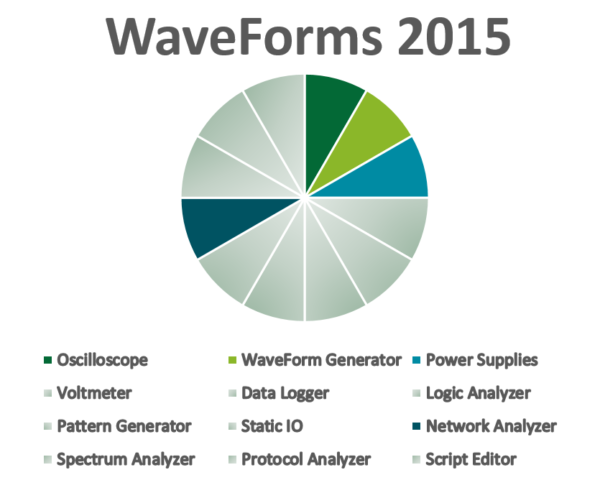
For this lab students will need:
- An Analog Discovery 2
- Some resistors, capacitors, an opamp, an NPN transistor, a breadboard, and breadboard wires
- All of which can be found in the Analog Parts Kit
- A Multisim Live Premium account (Free for a limited time!)
- WaveForms 2015 (A Quick and Free Download)
Similar to Lab 2, Lab 3 goes through theory, simulation, and practical analysis.
First, students learn the basics of a common emitter (CE) amplifier, including the frequency response and the low critical frequency, mid-range, and high critical frequency.
They then simulate the circuit with Multisim Live.
Then they explore an opamp open-loop filter, inverting amplifier characteristics with Multisim Live.
They also explore the inside of an opamp and the transistors that make it work the way it does.
Then they continue to use Multisim Live to investigate slew rate.
Finally, the lab goes into building the circuit:
First students must build the CE circuit and connect the Analog Discovery 2. The power supplies and waveform generator provide input, and both oscilloscope channels are used to measure the input and output.
Along with analyzing in the time domain, the network analyzer is used to measure the frequency response, which students are asked to compare with their simulation response.
Next, they analyze the opamp inverting amplifier in a similar fashion.
More advanced student can be challenged by considering how they would change their amplifier design in high speed vs low speed applications.
They can use Multisim Live to build and simulate the circuits, and then use the Analog Discovery 2 and WaveForms 2015 to examine their actual behavior. The Network Analyzer provides students with a quick way to verify their circuits behavior and adjust components if needed for more of a rapid prototyping experience.
Stay tuned to the blog next week for Lab 4, or download and checkout the labs yourself. If you are interested in the tools WaveForms has to offer, more information can be found on its Wiki Page.



